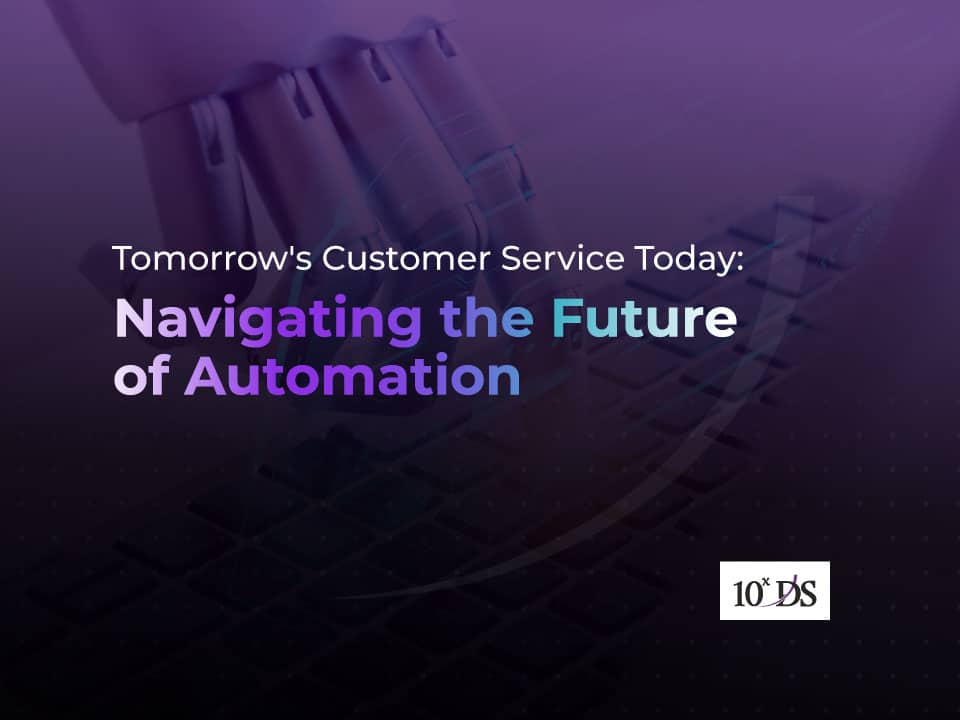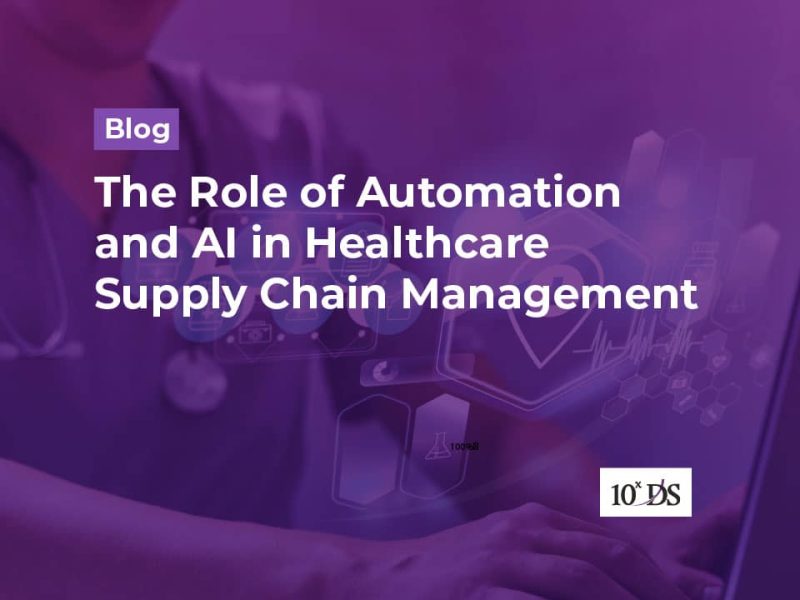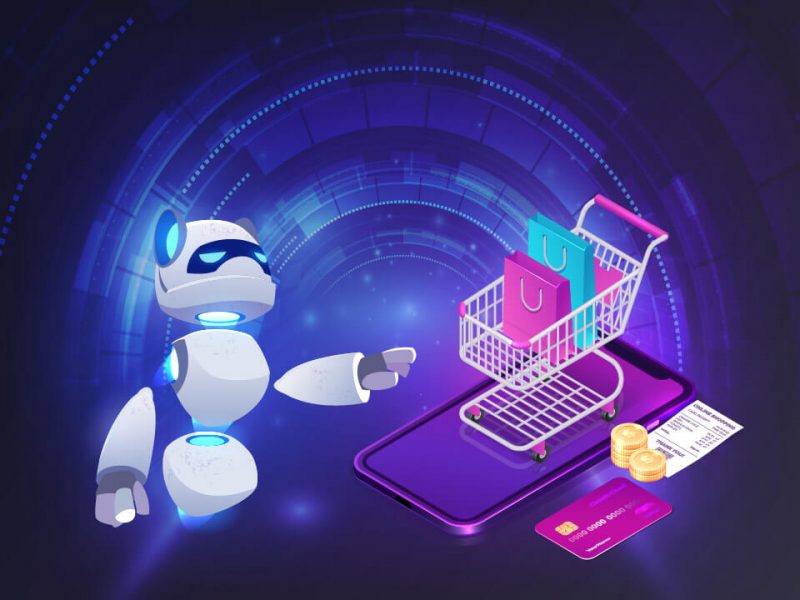
Tomorrow’s Customer Service Today: Navigating the Future of Automation
“The goal as a company is to have customer service that is not just the best but legendary.” Sam Walton, founder of Walmart, whose exceptional customer service played a significant role in its success. The statement emphasizes the aspiration for exceptional customer service that goes beyond meeting expectations. It highlights the importance of striving for legendary service that sets a company apart from the competition. In order to be at the forefront of service for its customers, companies adopted multiple technologies in the past. Web-based workflows, mobile apps, Interactive Voice Response (IVR) systems, Chatbots etc helped the companies to a certain extent. However, lack of personalization, difficulty handling complex queries through IVRs, language and cultural limitations, lack of emotional connection and lack of flexibility and adaptability remained major challenges for years. With advancements in Artificial Intelligence, automated customer service relies on several technology components to make it possible. In this blog, we will discuss the key components of automated customer service and how it is benefitting companies across the world.
Automated customer service refers to the use of technology, such as artificial intelligence (AI) and chatbot systems, to automate and streamline customer support processes. It involves the deployment of automated systems that can understand customer inquiries, provide information, and resolve common issues without the direct involvement of human agents. It aims to enhance efficiency, provide faster response times, and deliver consistent and scalable support to customers across various communication channels. By leveraging technologies like natural language processing and machine learning, automated customer service systems can interpret and respond to customer queries, improving overall customer experience while reducing operational costs for businesses.
Natural Language Processing (NLP)
NLP enables automated systems to understand and interpret human language. It involves tasks such as text tokenization, part-of-speech tagging, named entity recognition, and sentiment analysis, which help extract meaning and context from customer inquiries.
Machine Learning (ML) Algorithms
ML algorithms play a crucial role in automated customer service by enabling systems to learn from data and improve their performance over time. Supervised learning algorithms can be trained on labelled customer interactions to understand patterns and make accurate predictions or responses.
Chatbot Platforms
Chatbot platforms provide the infrastructure and tools necessary to build and deploy automated customer service solutions. These platforms often include features like dialog management, intent recognition, entity extraction, and response generation, making it easier to develop conversational interfaces.
Knowledge Bases
Knowledge bases store and organize information that automated systems can access to provide accurate and relevant responses. They contain FAQs, product details, troubleshooting guides, and other relevant resources that help address customer queries efficiently.
Application Programming Interfaces (APIs)
APIs allow integration with external systems and services. For automated customer service, APIs can be utilized to connect with CRM systems, knowledge bases, or data sources, enabling seamless access to customer information and context.
Voice Recognition and Speech Synthesis
Automated customer service systems often incorporate voice recognition technology to understand, and process spoken language. Speech synthesis technology, on the other hand, generates natural-sounding responses in speech form.
Data Storage and Analytics
Customer interactions and data generated from automated customer service systems can be stored and analysed to gain insights into customer behaviour, preferences, and service quality. Data analytics tools help extract valuable information for improving the overall customer service experience.
By integrating and leveraging these technology components, many companies offer automated customer service systems that can effectively understand customer inquiries, provide accurate responses, and deliver a seamless and efficient customer experience.
Amazon
Amazon employs AI-powered chatbots and virtual assistants, such as Alexa, to handle customer inquiries, provide product recommendations, and offer support through their website and devices.
Google utilizes AI-powered chatbots and virtual assistants to handle customer queries and provide assistance through its products like Google Assistant and Google Chat.
Salesforce
Salesforce offers Einstein Bots, an AI-powered chatbot platform designed to automate customer service interactions and provide personalized assistance and support across different channels.
Bank of America
Bank of America utilizes AI chatbots, such as Erica, to provide automated customer support, answer queries about account information, transactions, and offer personalized financial insights.
Uber
Uber employs AI-driven chatbots to handle customer inquiries, resolve issues, and provide real-time updates about ride status and other related information.
Automated customer service offers numerous advantages for businesses and customers alike. By leveraging technology and AI-driven systems, companies aim put their customers first. Benefits are:
- Enables faster response times and the ability to handle a high volume of inquiries simultaneously, leading to improved operational efficiency.
- Provide round-the-clock support, allowing customers to receive assistance at any time, regardless of business hours or time zones.
- Ensures consistent responses and information provided to customers, reducing the risk of human errors or inconsistencies in communication.
- Scales easily to handle a growing customer base without the need for additional human resources, making it cost-effective for businesses.
- By automating routine inquiries and tasks, businesses can reduce labor costs associated with customer support and allocate resources more efficiently.
- Accesses knowledge bases and databases instantly, providing accurate and up-to-date information to customers without delay.
- They can be deployed across multiple channels, including websites, mobile apps, social media, and messaging platforms, ensuring consistent support and accessibility.
- These systems can collect and analyse customer data, providing valuable insights for businesses to enhance their products, services, and overall customer experience.
- Seamlessly integrates with existing CRM systems, allowing for a comprehensive view of customer interactions and enabling personalized support based on customer history and preferences.
- With faster response times, consistent information, and 24/7 availability, automated customer service contributes to an enhanced customer experience, resulting in increased satisfaction and loyalty.
The future of automated customer service is set to be transformative as advancements in AI, natural language processing, and automation technologies continue to evolve. We can expect automated systems to become increasingly sophisticated, with enhanced natural language understanding, personalized interactions, and seamless multichannel integration. Collaboration between humans and AI will play a pivotal role, enabling the augmentation of human agents’ capabilities and delivering more proactive and predictive support. With voice and visual interactions, along with ethical considerations, the future of automated customer service promises improved efficiency, exceptional personalization, and enhanced customer experiences.
Talk to our experts to know more.


